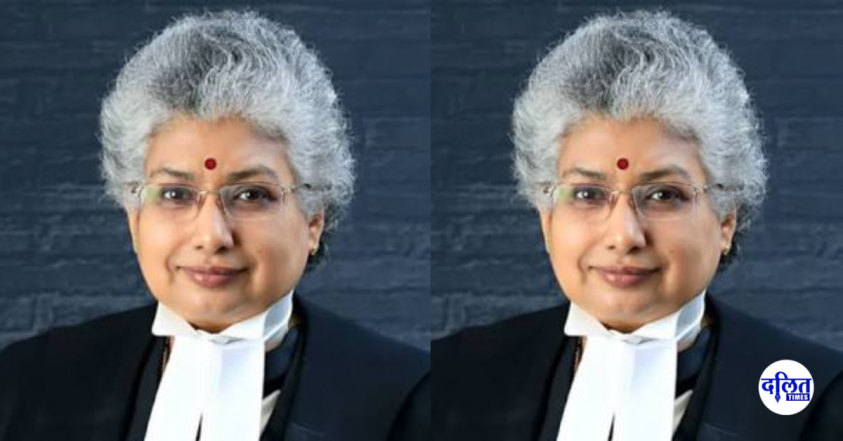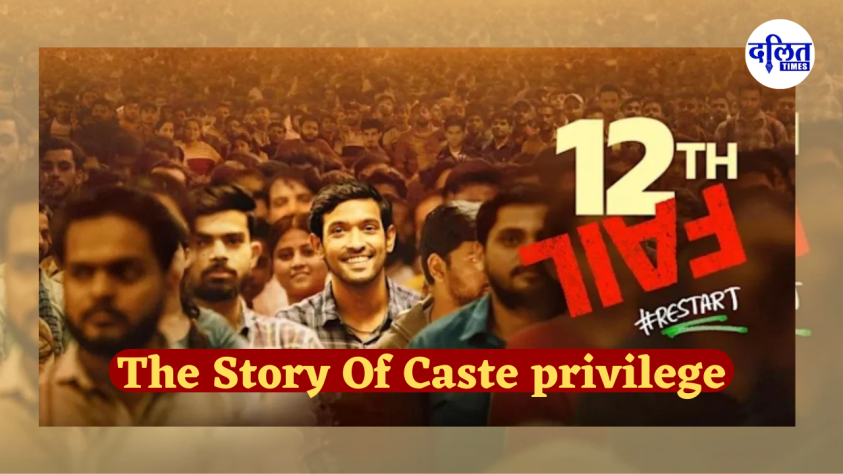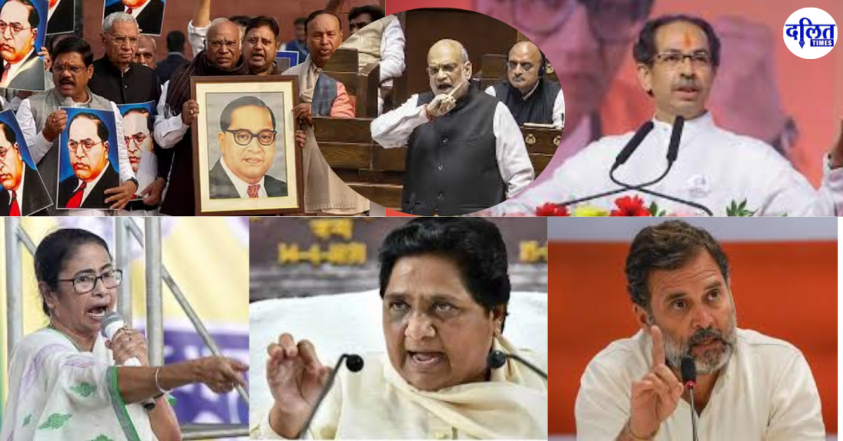(“What is happening today is not about women invading men’s spaces, but rather dismantling barriers that have unfairly excluded them for generations… Every woman stepping into a courtroom, legislature or boardroom today isn’t expanding her boundaries. She is reclaiming her fair share of this nation’s intellectual and institutional legacy.”— Justice B.V. Nagarathna)
In a judicial system that has historically been male-dominated and slow to embrace diversity, Justice B.V. Nagarathna stands as a beacon of progressive constitutionalism, courageous dissent, and unwavering commitment to gender justice.
Early Life and Legal Legacy
Born on October 30, 1962, in Karnataka, Justice Nagarathna inherited a powerful legacy as the daughter of Justice E.S. Venkataramiah, the 19th Chief Justice of India. But far from resting in her father’s shadow, she carved an independent path — rooted in empathy, fierce integrity, and a deep regard for constitutional values.
Educated at the Faculty of Law, University of Delhi, she enrolled with the Bar Council of Karnataka in 1987. For two decades, she built a robust practice in constitutional, administrative, and commercial law before the Karnataka High Court.
Judicial Ascent
Her appointment as an Additional Judge of the Karnataka High Court in 2008 and her confirmation as a Permanent Judge in 2010 marked the beginning of a distinguished judicial journey. Known for her thoughtful opinions and moral clarity, she emerged as a voice of reason and resilience in the judiciary.
On August 31, 2021, she was elevated to the Supreme Court of India — a milestone that placed her in line to become the first woman Chief Justice of India in 2027. Though her tenure is expected to last just under a month, it will mark a tectonic shift in a judiciary that has remained structurally patriarchal.
Landmark Judgments: Voice of the Constitution
- Balkis Yakub Rasool V. Uion of India & Ors,2022
Justice B.V. Nagarathna authored the opinion, emphasizing the paramount importance of the rule of law and the judiciary’s role in upholding it.
“The faith of the people in the efficacy of law is the saviour and succour for the sustenance of the rule of law. Justice is supreme and justice ought to be beneficial for the society. Law courts exist for the society and ought to rise to the occasion to do the needful in the matter. Respect for law is one of the cardinal principles for an effective operation of the Constitution, law and the popular Government. The faith of the people is the source to invigorate justice intertwined with the efficacy of law. Therefore, it is the primary duty and the highest responsibility of this Court to correct arbitrary orders at the earliest and maintain the confidence of the litigant public in the purity of the fountain of justice and thereby respect rule of law.”
- Demonetisation Case (Vivek Narayan Sharma v. Union of India, 2023)
She was the lone dissent, holding the 2016 demonetisation process unconstitutional. Her dissent exposed procedural irregularities and reinforced democratic accountability: the union has the authority to demonetize currency notes, this power must be exercised through the legislative processes of Parliament as stipulated by the constitution.
Feminist Jurisprudence and Public Voice
Justice Nagarathna is not just a judge, but a feminist jurist who has called for structural inclusion of women and marginalized groups in the judiciary. She believes that courts must not only dispense justice but also embody it — in gender representation, courtroom culture, and jurisprudence.
Despite a judiciary where less than 5% of Supreme Court judges since independence have been women, and systemic resistance to reform, she continues to advocate for equitable representation and institutional reform. Her public engagements echo a vision of a judiciary that is both independent and inclusive.
Legacy and Future
Justice Nagarathna’s significance transcends her expected brief tenure as the first woman Chief Justice of India. She represents a transformative moment: the emergence of a jurisprudence rooted in dignity,
Also Read: Banu Musthaq’s International Booker Win: A Victory for Diversity, Language, and Liberation
dissent, and democracy. In her, we see not only a symbolic victory for gender justice, but a substantive shift toward a more compassionate and constitutionally anchored judiciary.
The Collegium of the Indian Judiciary: Powers, Precedents, and Democratic Quest
The Collegium System in India is a unique judicial innovation, not found in the Constitution or in any statute. It governs the appointment and transfer of judges to the higher judiciary — i.e., the Supreme Court and High Courts — and remains one of the most debated mechanisms of judicial self-governance in the world. Developed entirely through judicial pronouncements, the collegium has been both lauded for safeguarding judicial independence and criticized for being opaque and unaccountable.
What is the Collegium System?
The Collegium is a body composed of the Chief Justice of India (CJI) and the other four senior-most judges of the Supreme Court, responsible for recommending appointments and transfers of judges in the higher judiciary.
For High Court appointments, the collegium includes the CJI and two senior-most judges of the Supreme Court. High Court collegia (for recommending HC judges) include the Chief Justice of the concerned High Court and two senior-most judges of that court.
Powers and Functions of the Collegium
The collegium system, composed of the Chief Justice of India and the senior-most judges of the Supreme Court, plays a pivotal role in judicial appointments. Its primary functions include the appointment of judges to the Supreme Court, the appointment and transfer of High Court judges, and the elevation of judges—either from the High Courts to the Supreme Court or to Chief Justice positions within the High Courts. While the collegium only recommends names, it holds significant influence: if the government returns a recommended name once, and the collegium reiterates its recommendation, the executive is constitutionally bound to accept it. Although the President of India formally makes the appointments, the collegium’s decisions, particularly upon reiteration, are binding on the executive, thereby upholding judicial independence.
Case Laws That Shaped the Collegium System
First Judges Case (S.P. Gupta v. Union of India, 1981)

In the landmark First Judges Case, the Supreme Court held that the executive had primacy in the appointment of judges to the higher judiciary. The judgment emphasized that the opinion of the Chief Justice of India (CJI), though important, was not binding on the President. Instead, the executive was free to override the CJI’s recommendations. This interpretation gave the government substantial control over judicial appointments and was later overturned in subsequent rulings that established the collegium system.
- Second Judges Case (Supreme Court Advocates-on-Record Association v. Union of India, 1993)
In the Second Judges Case, the Supreme Court decisively overturned the precedent set in the First Judges Case and held that primacy in judicial appointments must rest with the judiciary, not the executive. It ruled that the Chief Justice of India’s opinion, formed in consultation with the two senior-most judges of the Supreme Court, would have binding authority in matters of appointment and transfer of judges. This landmark judgment laid the constitutional foundation for the collegium system, marking a pivotal shift toward safeguarding judicial independence through judicial primacy in appointments.
- Third Judges Case (Re: Presidential Reference, 1998)
In the Third Judges Case, officially cited as In Re: Special Reference No. 1 of 1998, the Supreme Court clarified and expanded the collegium system established by the Second Judges Case. The Court held that the term “consultation” with the Chief Justice of India under Articles 124 and 217 of the Constitution must be interpreted to mean “consultation in plurality,” thus mandating a collective decision-making process. Consequently, it expanded the composition of the Supreme Court collegium to include the Chief Justice of India and the four senior-most judges of the Supreme Court. This judgment reinforced the principle of judicial primacy while ensuring institutional integrity through internal checks and balances.
- Fourth Judges Case (2015)
In the Fourth Judges Case, formally known as Supreme Court Advocates-on-Record Association v. Union of India, (2015) 6 SCC 408, the Supreme Court struck down the 99th Constitutional Amendment and the National Judicial Appointments Commission (NJAC) Act, 2014, holding them unconstitutional. The Court ruled that the NJAC violated the Basic Structure of the Constitution by undermining the independence of the judiciary. It reaffirmed that the primacy of the judiciary in judicial appointments is
an essential feature of the Constitution’s Basic Structure, and cannot be diluted by legislative or executive action. This judgment marked a decisive reaffirmation of the collegium system and judicial self-governance in India.
Women’s Representation in the Collegium: A Stark Gender Gap
Despite being tasked with upholding the Constitution’s promise of equality and justice, the higher judiciary in India continues to suffer from a glaring lack of diversity. Dalits, Adivasis, Muslims, Other Backward Classes (OBCs), and women remain grossly underrepresented in both the Supreme Court and High Courts. This systemic exclusion reflects deep-rooted caste, class, and gender biases within the legal and judicial ecosystem — where appointments often favour upper-caste, male candidates from elite urban backgrounds. The absence of marginalized voices on the bench not only undermines the legitimacy of judicial decisions but also weakens public confidence in the judiciary as a truly representative and empathetic institution. Judicial independence cannot be meaningful unless it is accompanied by judicial inclusiveness.
As of May 2025, only one woman judge, Justice B.V. Nagarathna, is a part of the five-member Supreme Court Collegium along with hif Justice of India B.R Gavai, Justice Surya Kant, Justice Vikram Nath, Justice and J.K Maheshwari. No woman has ever held the post of Chief Justice of India, although Hon’ble Justice Nagarathna is expected to become the first woman CJI in 2027, albeit for a very short tenure.
Since the inception of the Supreme Court in 1950, only 13 women judges have been appointed, out of more than 270 judges in total less than 5%.
The situation is no better in High Courts, where as the available data.
- Only 11.5% of sitting judges are women.
- Some High Courts (like Patna and Manipur) had no woman judges until very recently.
Despite multiple observations by former CJIs about the need to improve gender diversity, no structural reform has been undertaken to guarantee adequate representation of women in the collegium or the higher judiciary. The collegium remains become patriarchal — one that excludes women not because of competence, but due to a deeply entrenched male-dominated judicial culture, often indifferent to gender equity.
As the nation awaits Justice B.V. Nagarathna’s ascent to the position of the first woman Chief Justice of India, the expectations are not just historical—they are profoundly constitutional. Her judgments already reflect a deep commitment to academic rigour, ethical clarity, and an unflinching dedication to constitutional morality. In an era marked by political expediency and institutional hesitations, Justice Nagarathna stands as a beacon of judicial conscience—unafraid to dissent, determined to uphold the dignity of the Constitution, and resolute in her pursuit of justice that serves the last and the least. Her moral clarity and scholarly excellence inspire hope for a judiciary that is not only competent but also courageous. As we move forward, we look to her court with the anticipation of verdicts that will shape the soul of our republic—judgments grounded in law, elevated by values, and remembered for their integrity.
Bindu Ammini/Advocate/Supreme Court of India



